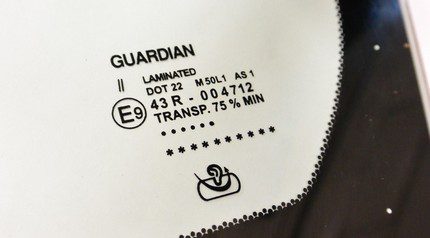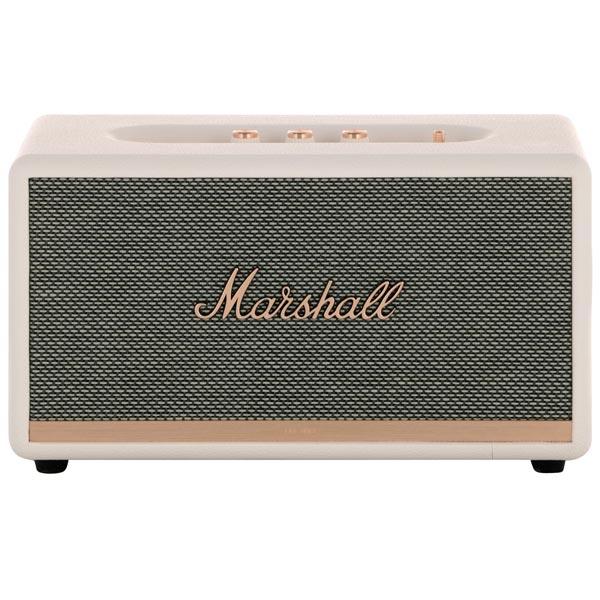
Types of car glasses, their marking and decoding
Content
Surely every car owner noticed the markings on the front, side or rear windows of the vehicle. The set of letters, numbers, and other designations contained in it carries a lot of useful information for the motorist - by decrypting this inscription, you can get information about the type of glass used, the date of its manufacture, as well as find out by whom and when it was produced. Most often, the need to use the marking appears in two cases - when replacing damaged glass and in the process of purchasing a used car.
If during the inspection it turned out that one glass was replaced - most likely, this was caused by its physical wear or accident, but the change of two or more glasses will almost certainly confirm the presence of a serious accident in the past.
What is car glazing
With the development of technology, the speed of movement of cars also increased, and, consequently, the requirements for the quality of view and the ability to see the space around the vehicle while driving have also increased significantly.
Automotive glass is a body element that is designed to provide the required level of visibility and perform a protective function. Glasses protect the driver and passengers from headwinds, dust and dirt, precipitation and stones flying off from under the wheels of other moving cars.
The main requirements for auto glass are:
- Security.
- Strength.
- Reliability.
- Sufficient product life.
Types of car glass
Today there are two main types of car glass:
- Triplex.
- Stalinite (tempered glass).
They have significant differences and have completely different characteristics.
Triplex
Autoglasses produced using the triplex technology consist of several layers (most often three or more), which are interconnected by a transparent film made of polymer material using high temperatures. Most often, such glasses are used as windshields (windshields), and occasionally as side or hatches (panoramic roofs).
Triplex has a number of advantages:
- It is extremely durable.
- If the blow was strong, and the glass was badly damaged, the fragments will not scatter throughout the interior of the car, injuring drivers and passengers. A plastic film acting as an interlayer will hold them.
- The strength of the glass will also stop the intruder - it will be more difficult to get into the window, breaking such auto glass.
- Glasses made using triplex technology have a high level of noise reduction.
- Reduces thermal conductivity and is resistant to thermal effects.
- The ability to change colors.
- Ecological compatibility.
The disadvantages of laminated glass include:
- High price of products.
- Great weight.
- The complexity of the manufacturing process.
If the laminated glass is broken while the car is moving, the fragments will not scatter throughout the cabin, which guarantees additional safety for all passengers and the driver of the vehicle.
The thickness of such a standard triplex package varies from 5 to 7 mm. Reinforced is also produced - its thickness reaches from 8 to 17 mm.
Strained glass
Tempered glass is called stalinite, and, accordingly, is made by tempering. The workpiece is heated to a temperature of 350-680 degrees, and then cooled. As a result, a compressive stress is formed on the surface of the product, which is able to ensure high strength of the glass, as well as the safety and heat resistance of the product.
This technology is most commonly used for the manufacture of car side and rear windows.
In the event of a strong impact, such auto glass crumbles into many fragments with blunt edges. It is not recommended to put it in place of the windshield, since in case of an accident, the driver and passengers can still be injured by them.
What is the marking of auto glass?
The marking is applied to car windows in the lower or upper corner and consists of the following elements:
- Information about the glass manufacturer or trademark.
- Standards.
- The date it was manufactured.
- Glass type.
- Encrypted code of the country which has granted regulatory approval.
- Additional parameters (information about anti-reflective coating, presence of electric heating, etc.)
Today there are two types of car glass markings:
- American. Manufactured in accordance with the FMVSS 205 standard. According to this safety standard, all parts of the car coming off the assembly line must be marked accordingly.
- European. A single safety standard has been adopted by all countries that are members of the European Union, and applies to all car windows sold on their territory. According to its provisions, the letter E must be inscribed in the monogram.
In Russia, in accordance with GOST 5727-88, the marking includes a code consisting of letters and numbers, which contains in encrypted form all information regarding the type of product, the type of glass from which it was made, its thickness, as well as technical operating conditions.
Decoding of glass marking
Manufacturer
The logo indicated in the marking or the trade mark will help you find out who is the manufacturer of automotive glass. At the same time, the specified logo may not always belong to the direct manufacturer - the specified information may relate to the company that is a party to the contract for the production of auto glass. Also, the marking can be applied directly by the car manufacturer.
Standards
The marking also contains the letter "E" and a number enclosed in a circle. This figure indicates the country code of the country where the part was certified. The country of manufacture and issuance of the certificate often coincides, however, this is an optional condition. Official codes of countries issuing certificates:
| Code | Country | Code | Country | Code | Country |
|---|---|---|---|---|---|
| E1 | Germany | E12 | Austria | E24 | Ireland |
| E2 | France | E13 | Luxembourg | E25 | Croatia |
| E3 | Italy | E14 | Switzerland | E26 | Slovenia |
| E4 | Netherlands | E16 | Norway | E27 | Slovakia |
| E5 | Sweden | E17 | Finland | E28 | Belarus |
| E6 | Belgium | E18 | Denmark | E29 | Estonia |
| E7 | Hungary | E19 | Romania | E31 | Bosnia and Herzegovina |
| E8 | Czech Republic | E20 | Poland | E32 | Latvia |
| E9 | Spain | E21 | Portugal | E37 | Turkey |
| E10 | Serbia | E22 | Russia | E42 | European Community |
| E11 | England | E23 | Greece | E43 | Japan |
DOT marking means the code of the auto glass manufacturer's factory. In the example given, DOT-563 is specified, it belongs to the Chinese company SHENZHEN AUTOMOTIVE GLASS MANUFACTURING. The complete list of possible numbers contains over 700 items.
Glass type
The type of glass in the marking is indicated by Roman numerals:
- I - hardened windshield;
- II - conventional laminated windshield;
- III - frontal processed multilayer;
- IV - made of plastic;
- V - no windshield, light transmittance less than 70%;
- VI - double-layer glass, light transmittance less than 70%.
Also, to determine the type of glass in the marking, the words Laminated and Lamisafe are indicated, which are used for laminated glass, and Tempered, Temperlite and Terlitw - if the glass used is tempered.
The letter "M" in the marking denotes the code of the material used. From it you can find out information about the thickness of the product and its color.
Date of manufacture
The date of manufacture of glass can be indicated in two ways:
- Through a fraction, indicating the month and year, for example: 5/01, that is, January 2005.
- In another case, the marking may contain several numbers that will have to be added in order to find out the date and month of production. First of all, the year is indicated - for example "09", therefore, the year of glass manufacture is 2009. The line below encrypts the month of manufacture - for example, "12 8". This means that the glass was produced (1 + 2 + 8 = 11) in November. The next line indicates the exact date of production - for example, "10 1 2 4". These figures will also need to be added - 10 + 1 + 2 + 4 = 17, that is, the date of glass production will be November 17, 2009.
In some cases, dots may be used instead of numbers to indicate the year in the marking.
Additional notation
Additional symbols in the form of pictograms in the marking will mean the following:
- IR inscription in a circle - athermal glass, chameleon. During its production, a layer of film was added, which contains silver, the purpose of which is to dissipate and reflect heat energy. The reflection coefficient reaches 70-75%.
- The thermometer symbol with the letters UU and an arrow is athermal glass, which is a barrier to ultraviolet radiation. The same pictogram, but without the letters UU, is applied to athermal glass with a sun-reflecting coating.
- Often one more type of pictograms is applied to athermal glasses - a mirror image of a person with an arrow. This will mean that a special coating has been applied to the surface of the product to reduce the possibility of glare. Such auto glass is as comfortable as possible for the driver - it reduces the percentage of reflection by 40 points at once.
- Also, the marking may contain icons in the form of drops and arrows, which will mean the presence of a water-repellent layer and an antenna icon in a circle - the presence of a built-in antenna.
Anti-theft marking
Anti-theft marking involves applying the VIN number of the vehicle to the surface of the car in several ways:
- In the form of dots.
- Completely.
- By specifying the last few digits of the number.
With a special acid-containing compound, the number is etched on glass, mirrors or headlights of a car and takes on a matte color.
This marking has several advantages:
- Even if such a car is stolen, it will be quite difficult to resell it, and the opportunities for its return to the owner will increase.
- By marking, you can quickly find glass, headlights or mirrors stolen by intruders.
- When applying anti-theft markings, many insurance companies provide a discount on CASCO policies.
The ability to read the data encrypted in the markings applied to the car glass can be useful to every car enthusiast when it becomes necessary to change the glass or buy a used car. The code, consisting of letters and numbers, contains information about the type of glass, its manufacturer, features, as well as the date of actual production.


2 comment
Ahmet O
Thank you for the very useful, detailed and accurate information.
anonym
excellent